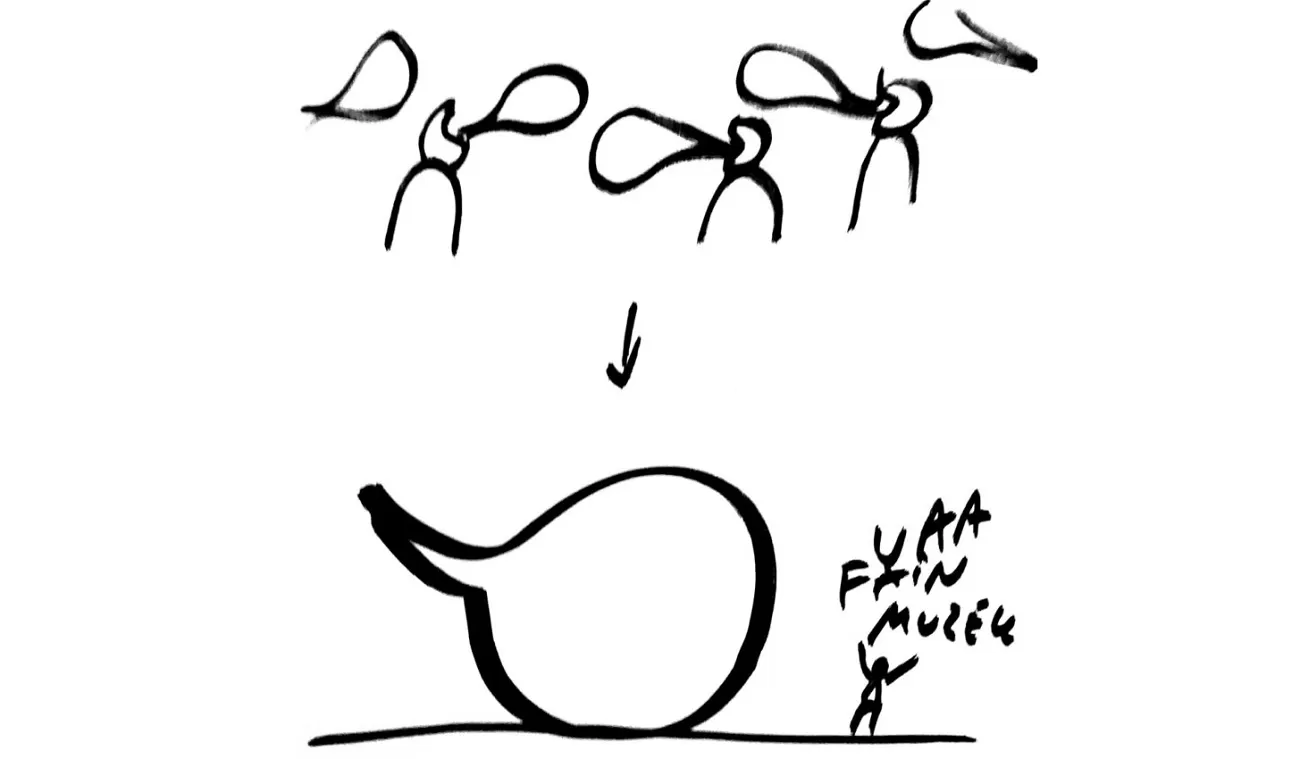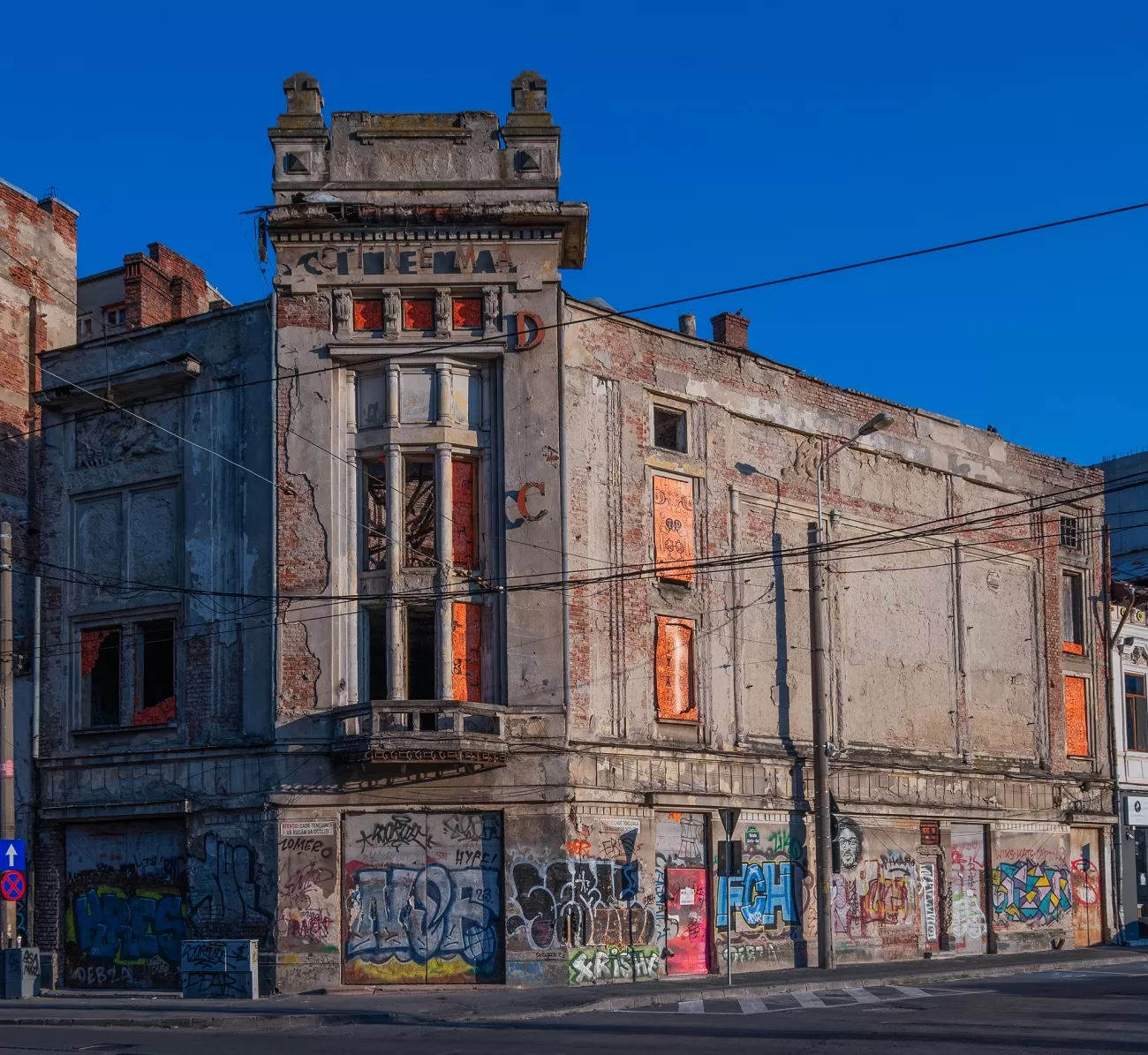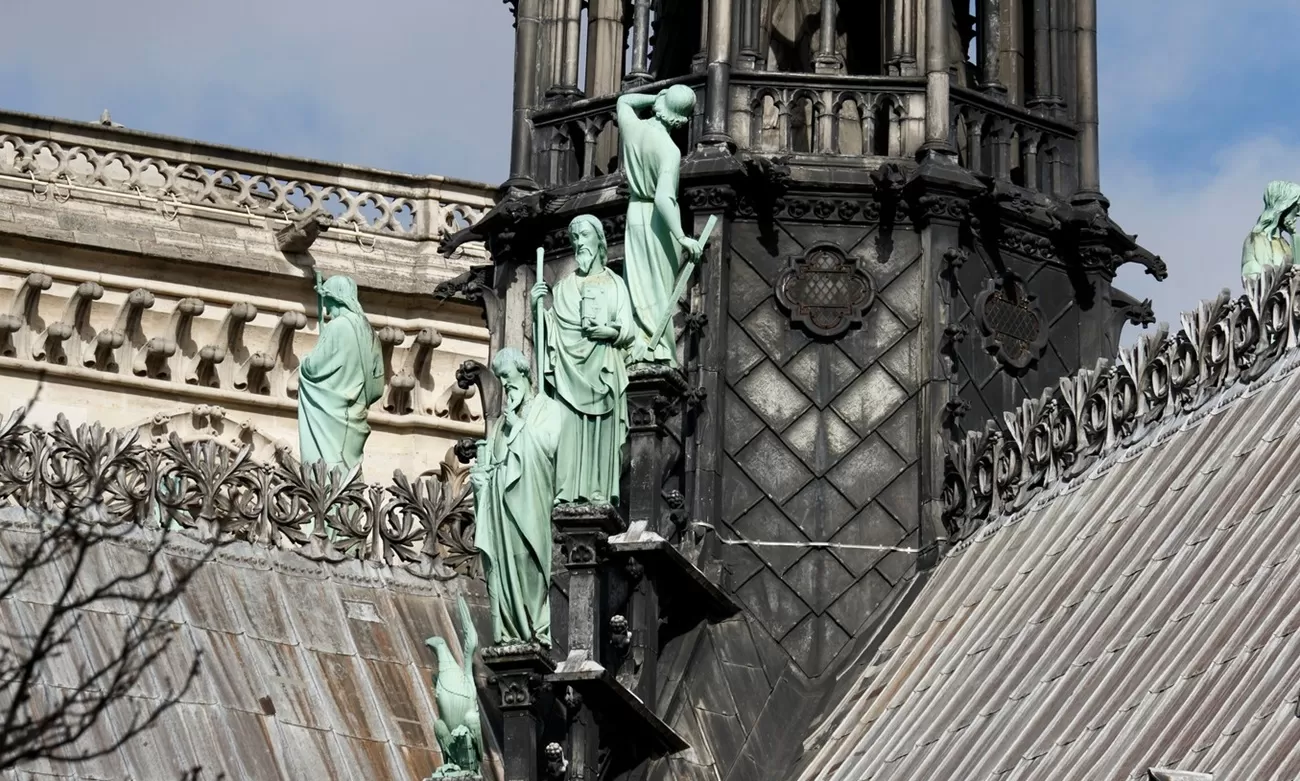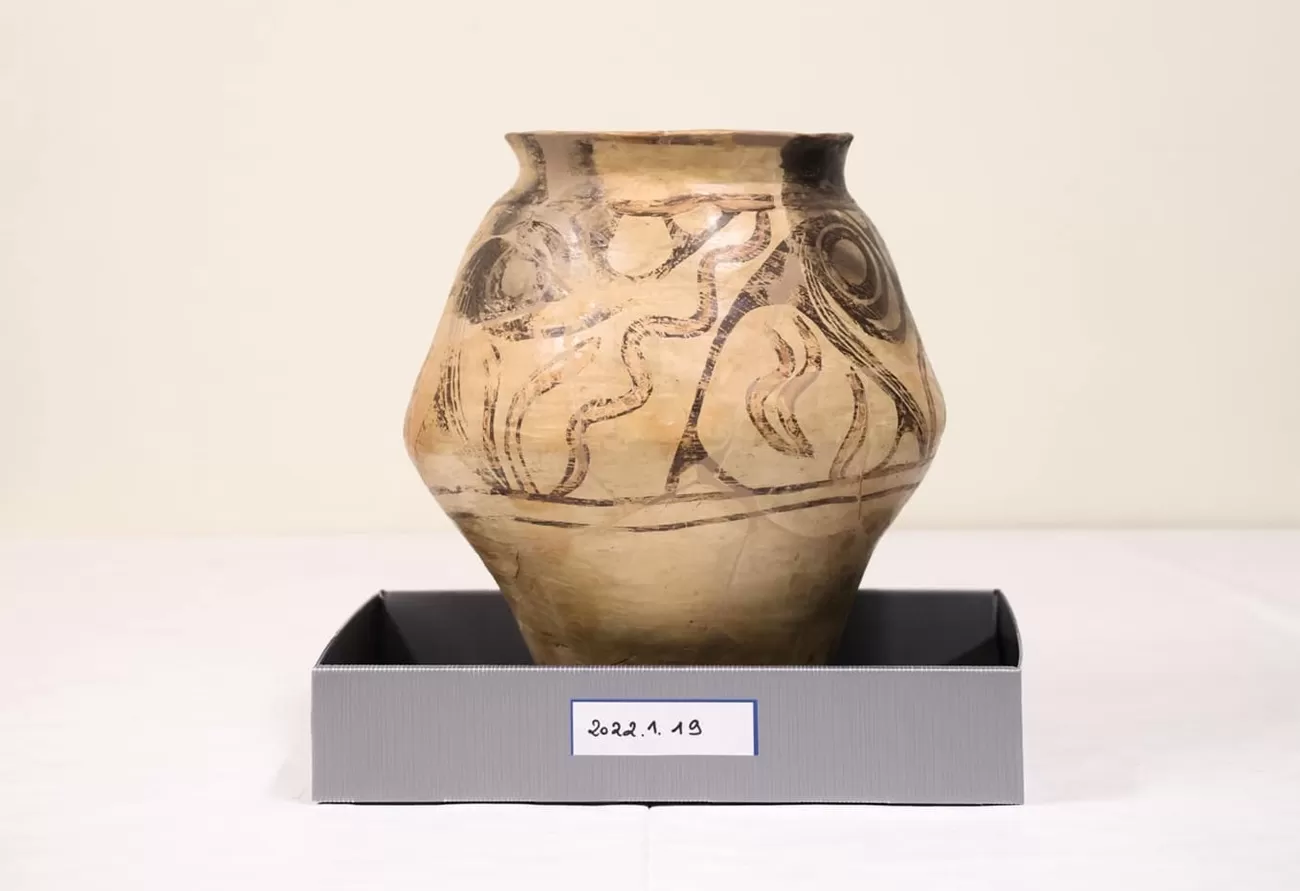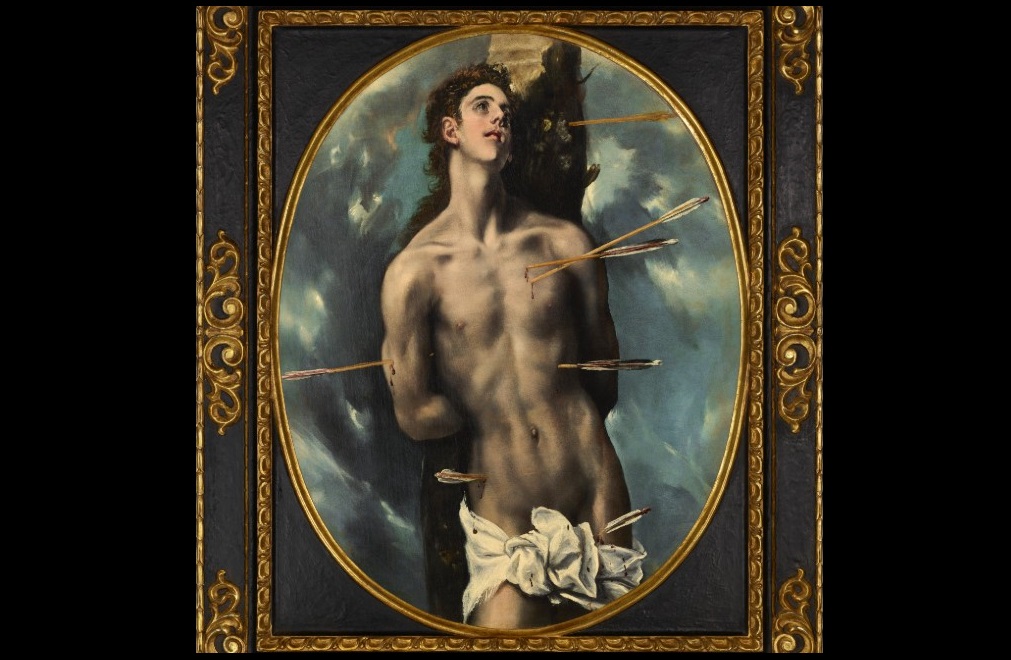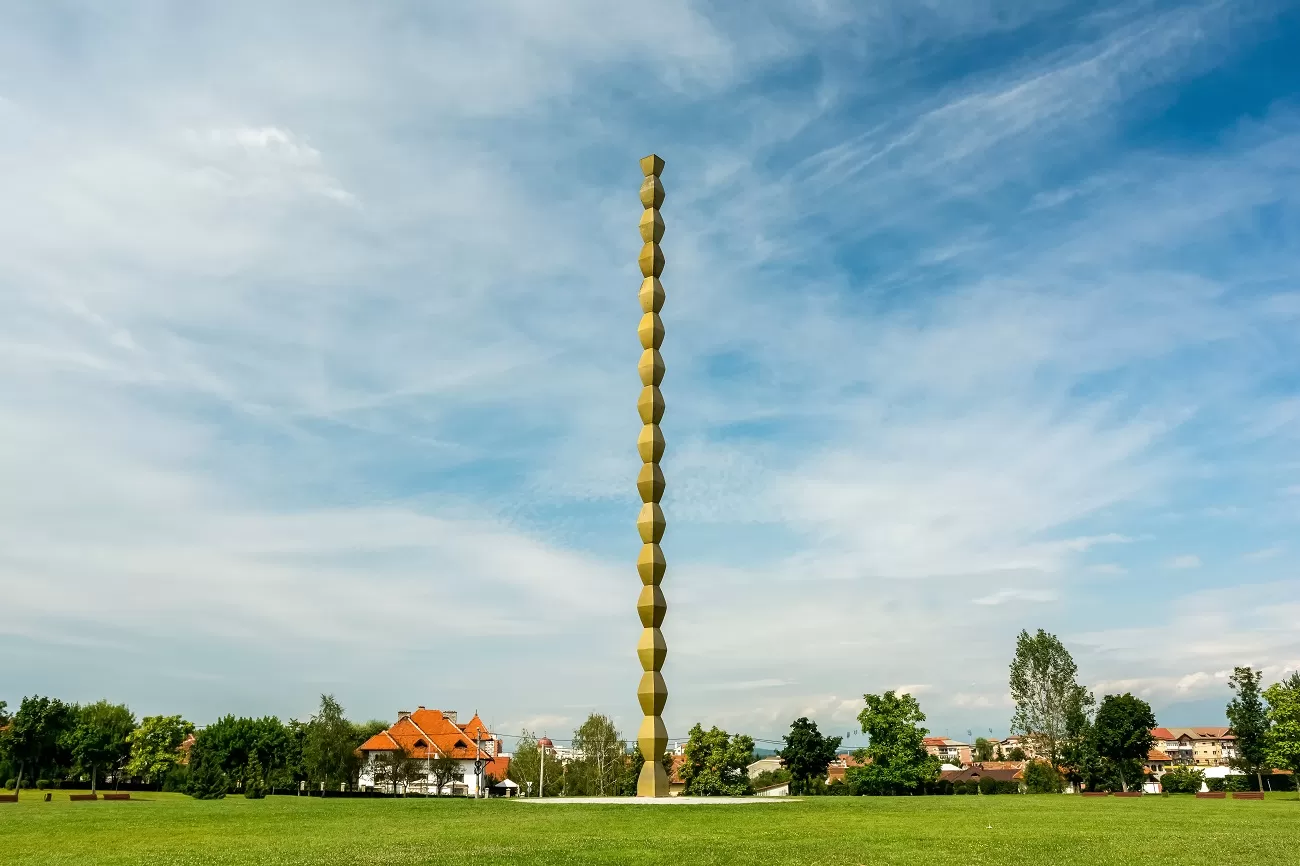
Câmpulung Muscel, the largest site of Neo-Romanesc architecture in the country
Heritage increases the sense of identity and can bring money into the community. Education is needed in terms of its conservation and greatest visibility, leading to the proper restoration of historic buildings. The solutions that specialists see for Romanian localities that are less popular with tourists are guided tours focusing on architectural and industrial heritage and cultural and artistic programs, all designed to attract visitors. As the tourist value of the city increases, so do investments.
One example is Câmpulung Muscel, the first capital of Wallachia and a center of education in the 19th century. Considered “the largest site of Neo-Romanesc architecture in the country,” many buildings need to be restored, but the lack of funds for these operations and bureaucracy are impediments. As in many parts of the country. However, not interfering improperly with most of the buildings is better than a botched renovation, lacking vision and using poor-quality materials.
Conservation through inertia is an opportunity for the proper restoration of the buildings in Câmpulung. They are being secured, which gives them a few years’ respite.

A 19th-century house, one of the few rural buildings preserved in the historic center of Câmpulung Muscel. It features elements specific to traditional Muscel houses; curatorial
“The municipality has an extremely valuable built heritage, it is the largest site of Neo-Romanesc architecture in the country and the only one preserved to such a high standard, and for this we have a responsibility. We need to lobby much more at the national level so that the city can move in certain directions of rehabilitation and enhancement within the Ministry of Culture,” says Ioana Marcu, city manager.
If administrations are unable to carry out rehabilitation projects, they can seek to collaborate with associations and NGOs, as well as with civil society. Public-private and public-community partnerships are key.
The value of architectural heritage for communities
What architectural heritage means for the inhabitants of a locality was discussed last weekend in the Growing Communities program at the Convivial space in Câmpulung Muscel.
Eliza Yokina, architect and artist, Anita Sterea, historian, cultural events curator, and president of the “Nouă ne pasă” association, Ioana Marcu, city manager of Câmpulung, and Ana Rubeli, president of the association “Aici a stat” (Here it stood), emphasized the historical, aesthetic, and memorial-symbolic value of heritage, the idea that it is a binding force for communities, a binding force for identity.
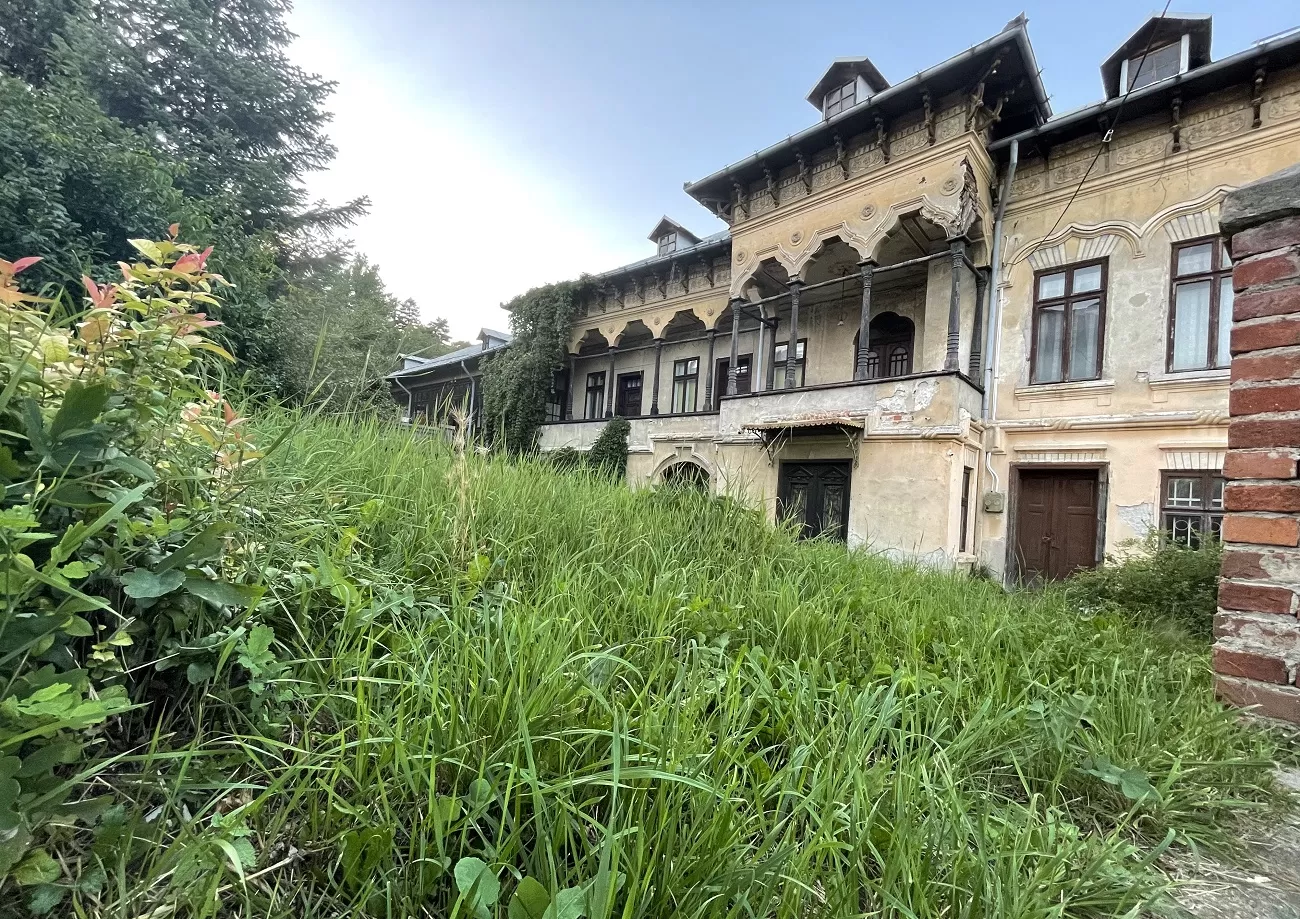
Nae Manolescu Villa, 1898, built for an important publisher; curatorial
After the communist period, when all three values disappeared, when construction continued without any aesthetic considerations and in an increasingly chaotic manner, an opposition movement emerged—people who wanted to learn about their past and preserve it as much as possible. The connection with this must first be understood, so education is needed in terms of preserving heritage. What is not known or appreciated cannot be saved. Schools are a starting point. In this regard, several associations run architecture courses with volunteer architects in schools across the country, but a national educational program is needed.
Eliza Yokina also pointed out that the main challenge in restoration, in bringing old houses into the modern age using non-invasive methods, is the materials used. There are new, high-performance materials available, but experts and craftsmen are also needed to process them and carry out the work.
As far as investors are concerned, a city must have purchasing power for investments to be successful. If tourism is developed or stimulated through events, then interest in this regard also increases.
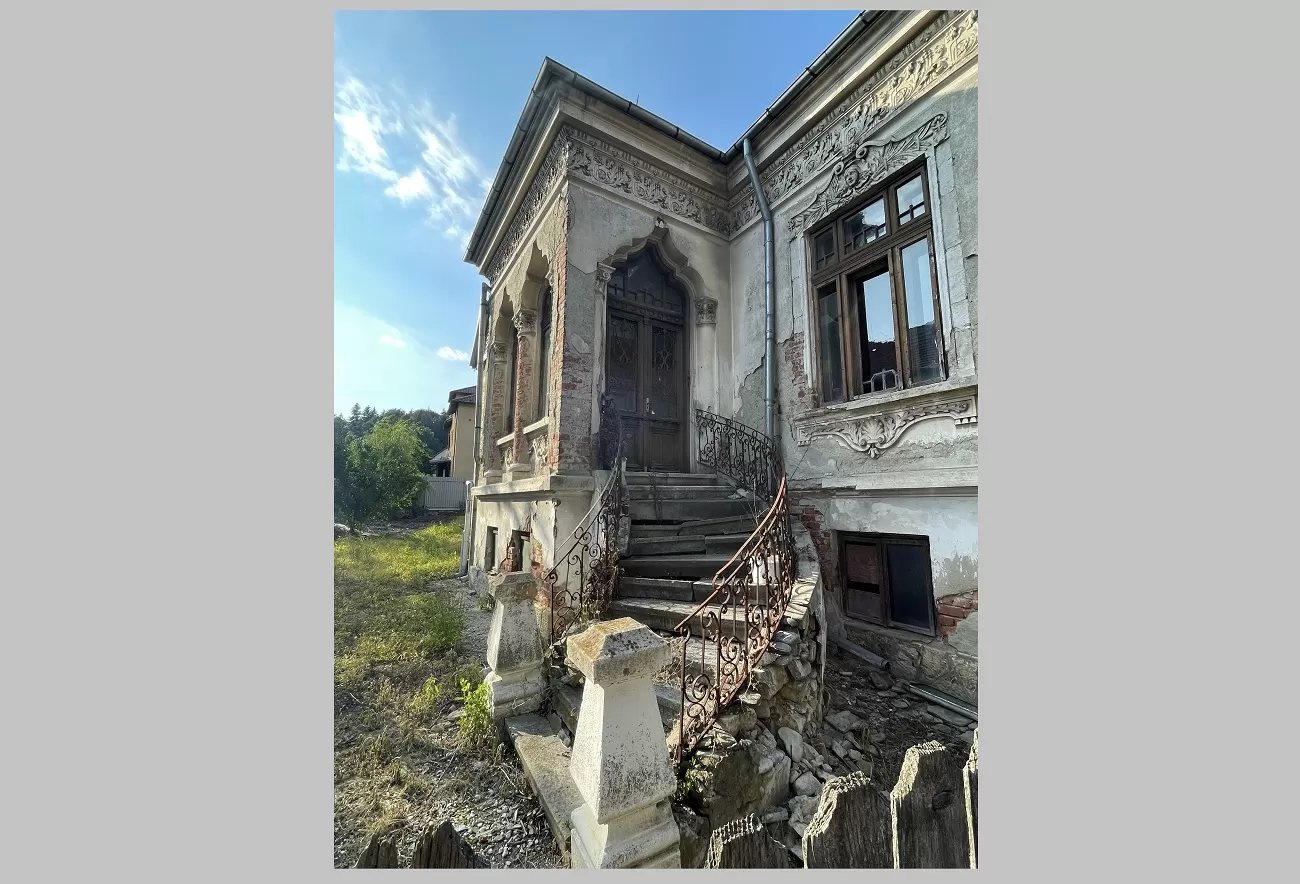
Crasan House, 1910, built by Italian craftmen; curatorial
Golescu Villa, an example to follow
Vila Golescu, built at the beginning of the 20th century, was permanently inhabited, including by a general’s family during the communist period, was the filming location for two feature films – “Ultima noapte de dragoste” (1980) and “Octav” (2017) – and continues to host television productions, workshops, and artist residencies.
Vasile Golescu, who studied agroforestry in Paris, received a plot of land from his parents upon his return to the country in 1900, on which he created an arboretum, successfully acclimatizing several species of trees and shrubs from different parts of the globe.

The 125-year-old magnolia tree in the courtyard of Villa Golescu; curatorial
Covering 3 hectares, featuring meadows and forests, a 125-year-old magnolia tree, ginkgo biloba trees, plane trees, Japanese acacia trees, Canadian maple trees, and a tulip tree, it is one of the must-see places in Câmpulung Muscel.
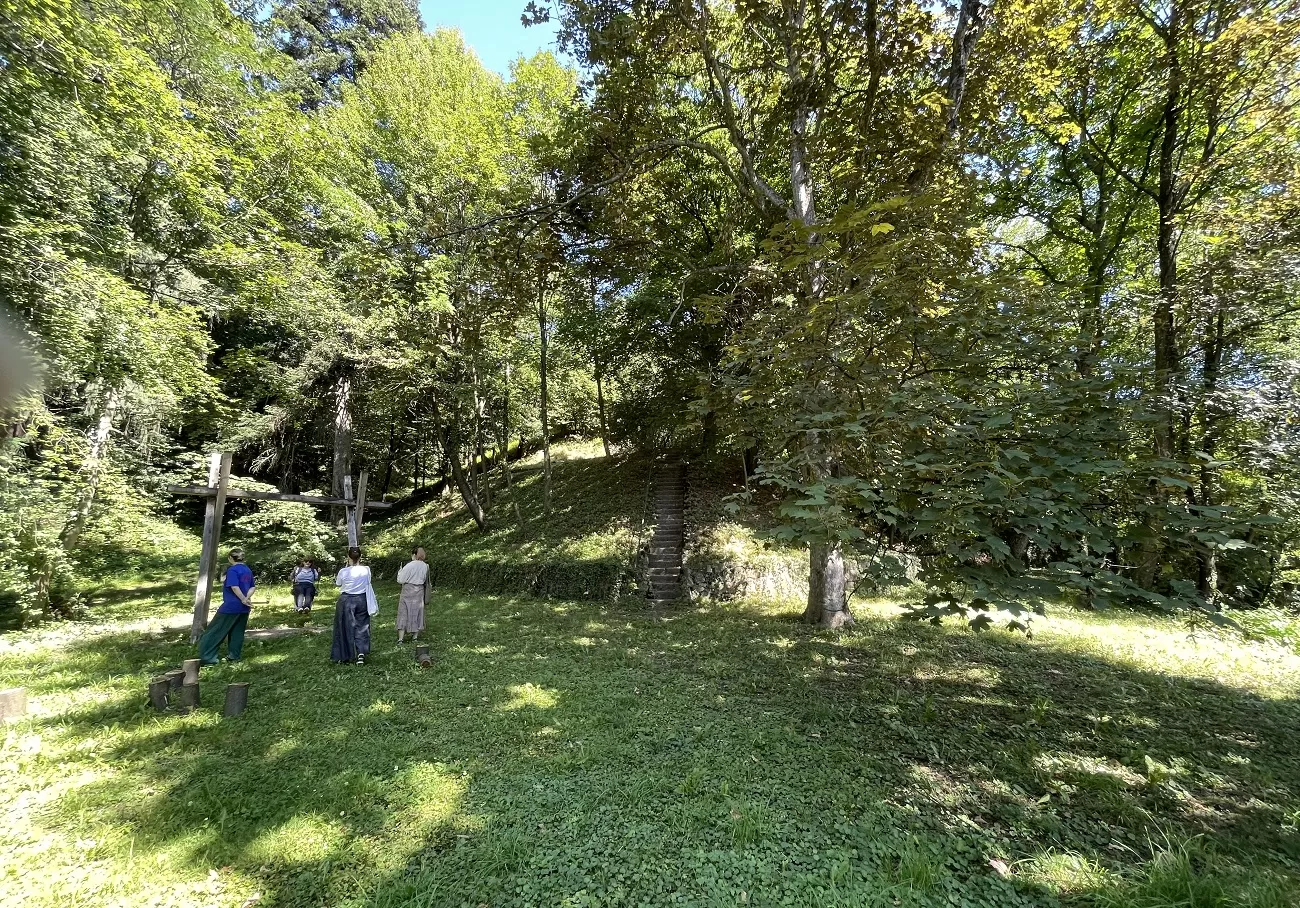
Dendrological park, Villa Golescu; curatorial
In 1900, construction began on the villa, designed by architect Constantin N. Simionescu in the Romanian national style. Vasile Golescu, married to Maria Cantilii, had four children, including twins Irina and Viorica. The building was named Villa Ștefan, in memory of his son who died during the war in 1914. The twins, who died in 2002 and 2001, respectively, had no heirs, nor did their sister Ileana (who died in 1963). Thus, in September 2000, a deed of donation was signed between them and the Pro Patrimonio București Foundation. The foundation had been established in London in the spring of that year under the guidance of architect Șerban Cantacuzino and Nicolae Rațiu.
The Golescu villa and park, preserved intact, became the property of the Pro Patrimonio Foundation in 2002.
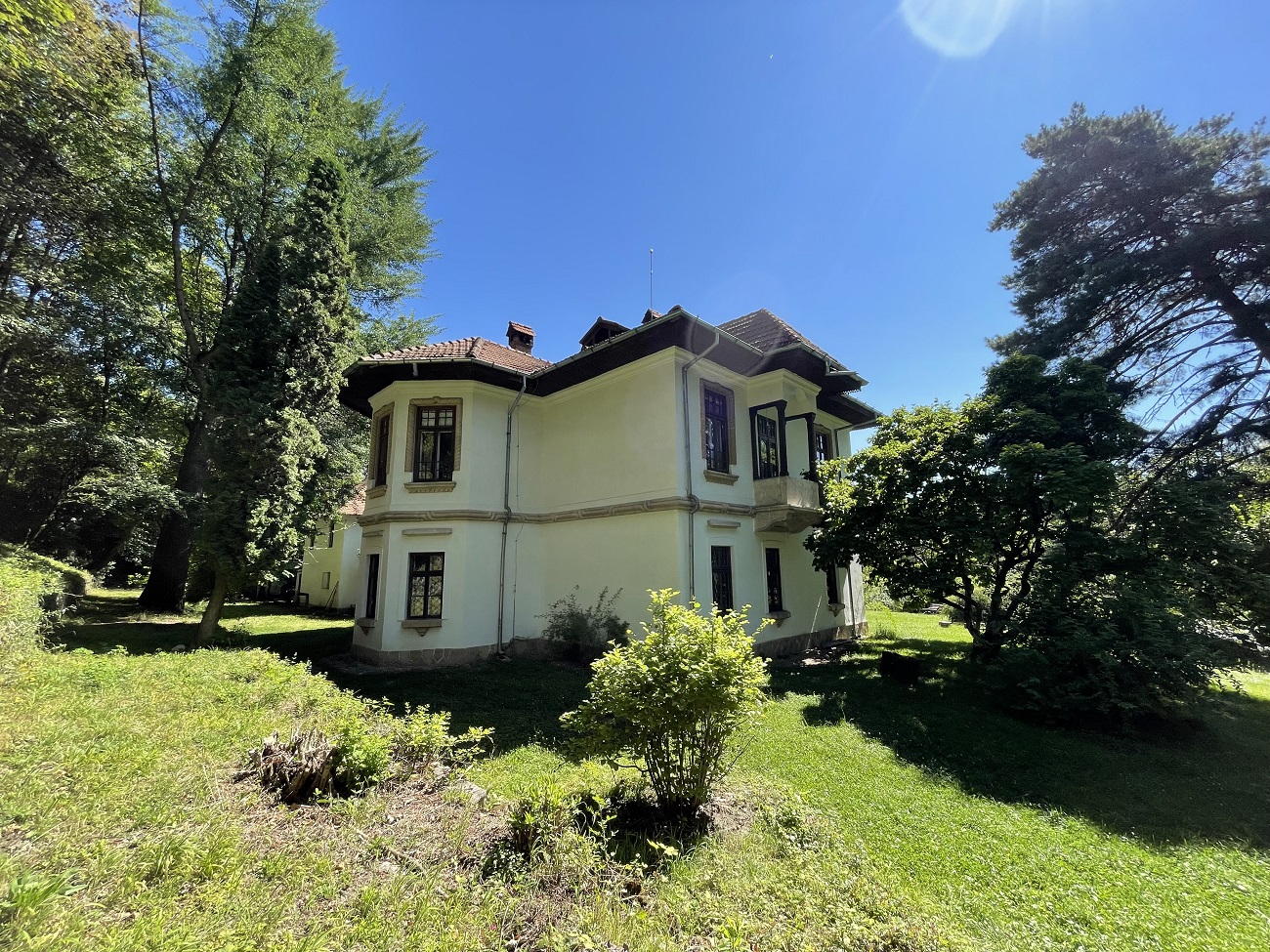
Golescu Villa, rear view; curatorial
Restored between 2003 and 2007, including the furniture and decorative objects, Villa Golescu is rented out for short periods to small groups of tourists. It is not permitted to move the furniture or decorative objects in any of the rooms, nor is it permitted to publish photographs taken inside without prior arrangement.
Among the most important pieces are the original library, with old books on various subjects of interest to the family, drawings by Golescu’s daughters, diplomas, vintage photographs, and painted portraits, and the entire city can be seen from the main balcony.
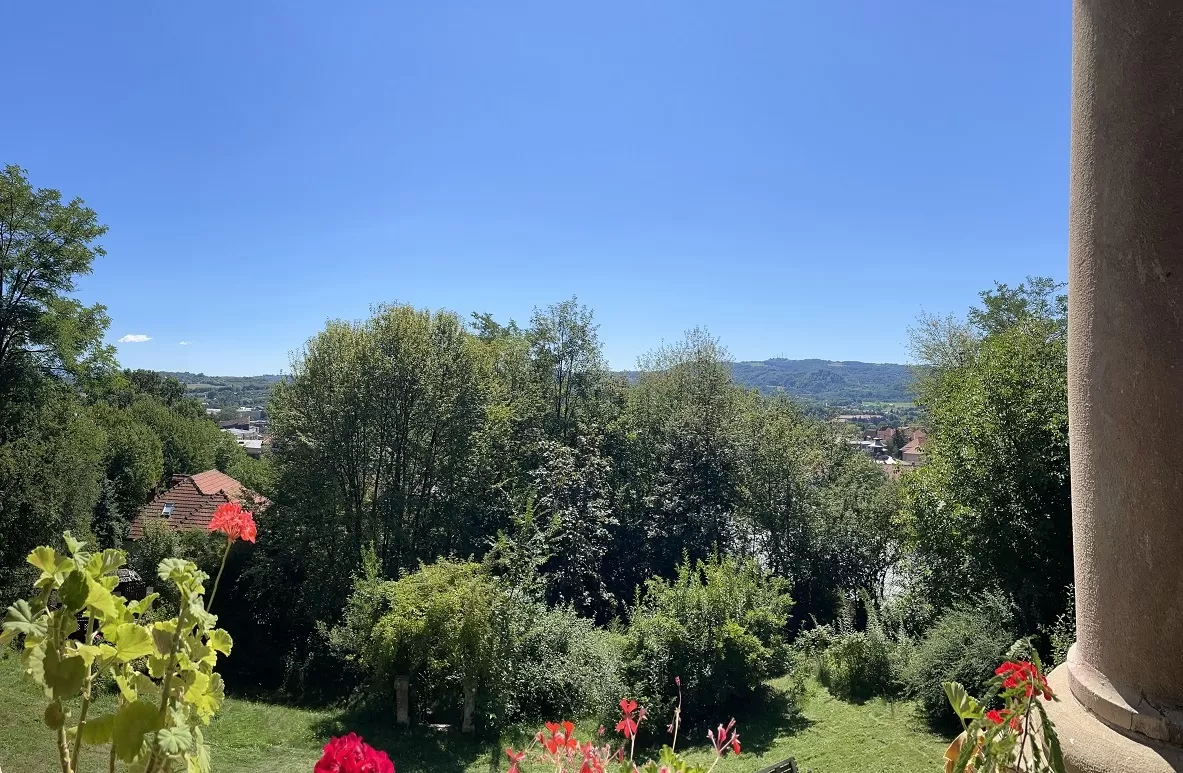
View over Câmpulung Muscel; curatorial





